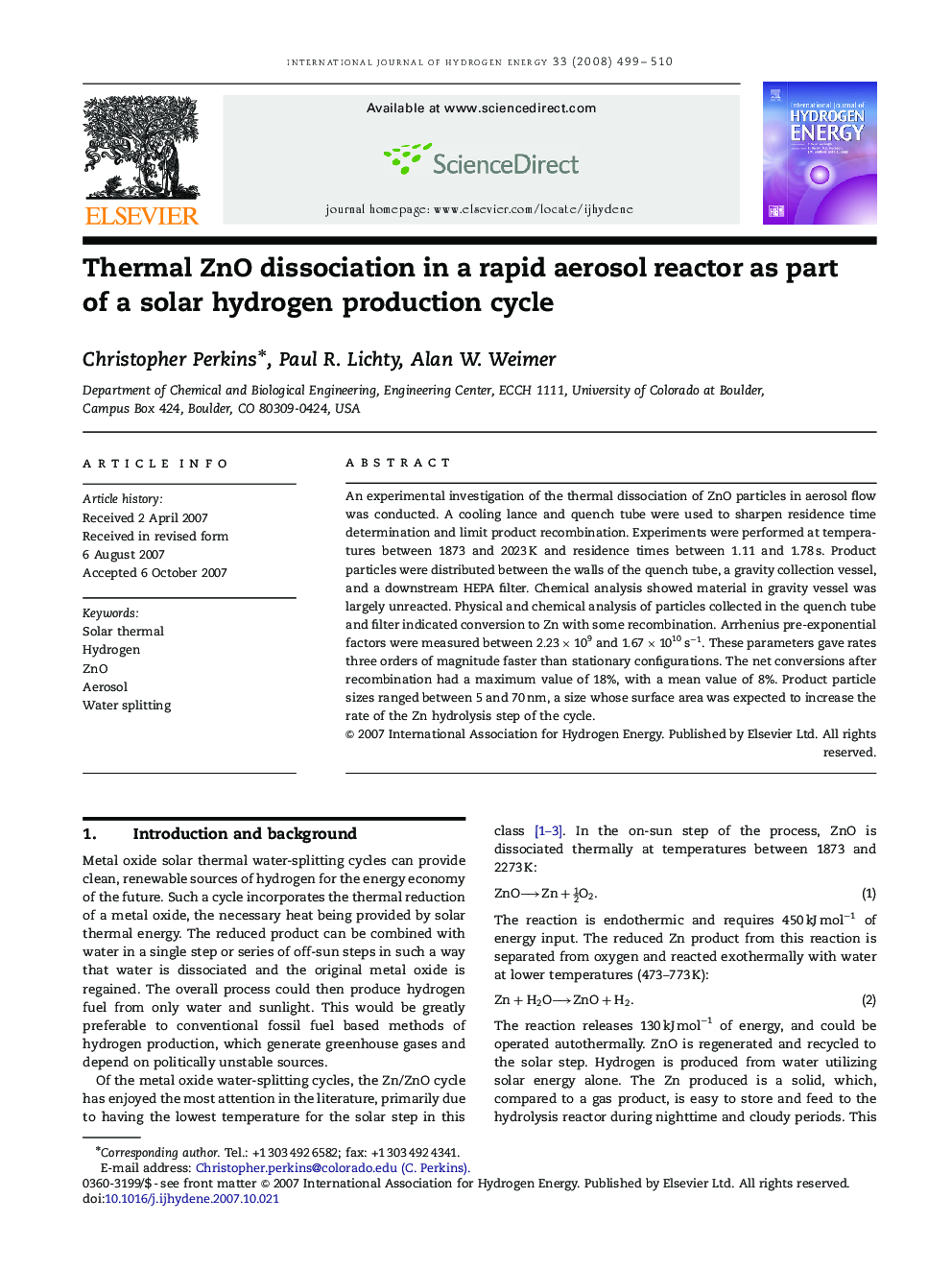| Article ID | Journal | Published Year | Pages | File Type |
|---|---|---|---|---|
| 1279975 | International Journal of Hydrogen Energy | 2008 | 12 Pages |
An experimental investigation of the thermal dissociation of ZnO particles in aerosol flow was conducted. A cooling lance and quench tube were used to sharpen residence time determination and limit product recombination. Experiments were performed at temperatures between 1873 and 2023 K and residence times between 1.11 and 1.78 s. Product particles were distributed between the walls of the quench tube, a gravity collection vessel, and a downstream HEPA filter. Chemical analysis showed material in gravity vessel was largely unreacted. Physical and chemical analysis of particles collected in the quench tube and filter indicated conversion to Zn with some recombination. Arrhenius pre-exponential factors were measured between 2.23×1092.23×109 and 1.67×1010s-1. These parameters gave rates three orders of magnitude faster than stationary configurations. The net conversions after recombination had a maximum value of 18%, with a mean value of 8%. Product particle sizes ranged between 5 and 70 nm, a size whose surface area was expected to increase the rate of the Zn hydrolysis step of the cycle.
